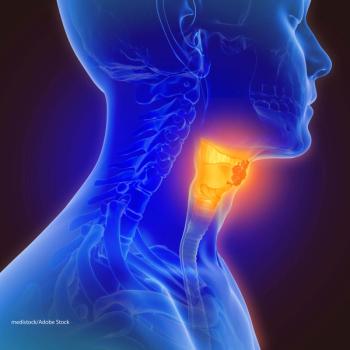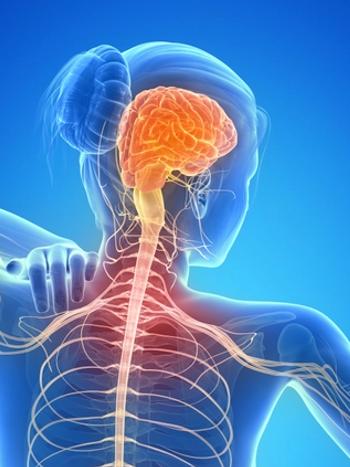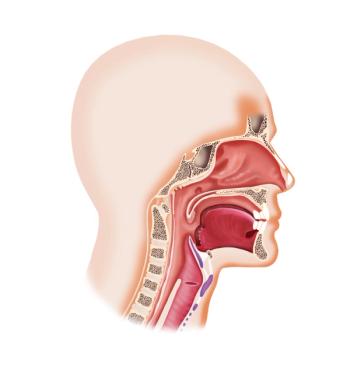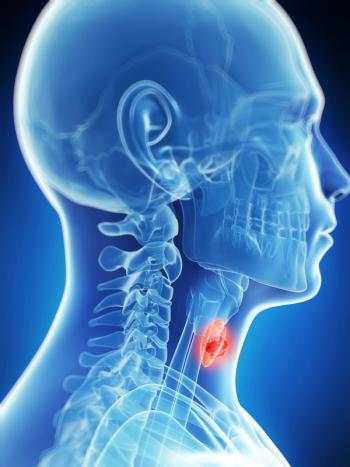
Oncology NEWS International
- Oncology NEWS International Vol 10 No 2
- Volume 10
- Issue 2
Accelerated RT Beneficial in Head and Neck Cancer
BOSTON-Despite substantially increased acute toxicity, patients with inoperable head and neck tumors benefited from accelerated radiation therapy in a randomized clinical trial reported by Jean Bourhis, MD, PhD, at the American Society for Therapeutic Radiology and Oncology (ASTRO) annual meeting.
BOSTONDespite substantially increased acute toxicity, patients with inoperable head and neck tumors benefited from accelerated radiation therapy in a randomized clinical trial reported by Jean Bourhis, MD, PhD, at the American Society for Therapeutic Radiology and Oncology (ASTRO) annual meeting.
The local control rate was 58% at 2 years for patients who received accelerated 62 to 64 Gy radiation therapy in 3 weeks with twice-a-day dosing. For a comparison group that received standard 70 Gy radiation therapy in 7 weeks with once-a-day dosing, the rate was 34%.
Dr. Bourhis also reported "a slight increase" in survival and that, "we are doing a final analysis to determine if this increase is statistically significant."
Twelve European centers participated in the 268-patient study, which was conducted by GORTEC (Radiation Oncology Group for Head and Neck Cancer) between December 1994 and September 1998. Dr. Bourhis is a professor at the Institut Gustave Roussy, Villejuif, France.
All the patients had locally advanced head and neck squamous cell carcinoma, most frequently located in the oropharynx (75%); most had T4 (70%) and N2-N3 (65%) disease with poor prognosis for survival.
Increase in Acute Toxicity
Patients in the accelerated arm received a median dose of 63 Gy in 23 days vs 70 Gy in 48 days for the conventional arm. The total dose was 10% lower for the accelerated patients, who, in turn, were ahead 24% in local control at 2 years.
The price was a large increase in acute toxicity for the accelerated group. Not only did 83% of patients have difficulty swallowing with grade 3-4 mucositis, but 90% required a feeding tube, usually for 6 to 8 weeks. The accelerated patients were hospitalized more often, Dr. Bourhis said, although for shorter stays than the control group. In comparison, the patients receiving conventional therapy had lower rates of grade 3-4 mucositis (28%) and feeding tube use (41%).
"There was a huge increase in acute toxicity, but so far we haven’t seen an increase in late effects," Dr. Bourhis reported. He cautioned that some of the feeding tube use was due not to the radiation therapy but to the size of the tumors. "Many of the patients had problems swallowing because of tumor mass," he said. Skin toxicity was about the same in both groups.
GORTEC plans to continue this research with further studies in Europe, Dr. Bourhis said. "You can see at 2 years there is a 24% improvement in locoregional control," he said. "We did see an improvement that was worthwhile."
Commenting on the study for ASTRO, Lester J. Peters, MD, former head of the Division of Radiation Oncology, M.D. Anderson Cancer Center, suggested that future trials should consider newer treatments in the control groups.
"It may be a moot point now to ask whether any form of altered fractionation is better than a conventional fraction of 2 Gy once a day up to 70 Gy because this is no longer a standard of care," he said. "Combined chemoradiotherapy has been shown conclusively to be better than conventional radiotherapy, as has altered fractionation using either hybrid fractionation or concomitant boost, so that any further trials must use one of these preferred methods as the control arm and never 70 Gy in 7 weeks."
Articles in this issue
almost 25 years ago
Activated T Cells Can Alter Behavior of Leukemic B Cellsalmost 25 years ago
Response Continues for at Least 8 Months with Ibritumomab Tiuxetanalmost 25 years ago
Synthetic Anthracycline Produces High Response Rates in SCLCalmost 25 years ago
Ibritumomab Tiuxetan Produces 73% Response Rate in B-cell NHLalmost 25 years ago
G-CSF Might Prolong Rituximab Responses in NHLalmost 25 years ago
Use of CAD Increases the Early Detection of Breast Cancer by 20%almost 25 years ago
Rituximab Plus Fludarabine May Be Good Alternative to Rituximab Plus CHOPNewsletter
Stay up to date on recent advances in the multidisciplinary approach to cancer.

















































































